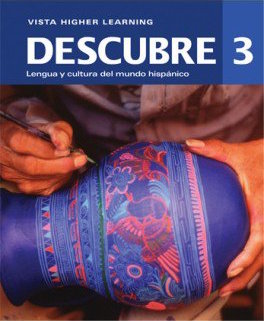
All Solutions
Page 388: Despues de leer
****
|ORDER |SENTENCE |
|–|–|
|**2** |**a.** Sentado en su sillón de terciopelo verde , volvió al libro en la tranquilidad del estudio. / *Sitting in his green velvet chair, he returned to the book in the quiet of the study.* |
|**5** |**b.** Finalmente, ella se fue hacia el norte y el llegó hasta la casa del bosque. / *Finally, she went northward and he came to the house in the forest.* |
|**1** |**c.** Un hombre regresó a su finca después de haber terminado unos negocios urgentes. / *A man returned to his farm after finishing some urgent business.* |
|**8** |**d.** Llegó hasta el salón y se dirigió hacia el hombre que, sentado en el sillón de terciopelo verde, estaba leyendo una novela. / *He came to the living room and went to the man who, sitting in the green velvet armchair, was reading a novel.* |
|**6** |**e.** Ese día los perros no ladraron y el mayordomo no estaba. / *That day the dogs did not bark and the butler was not there.*|
|**3** |**f.** En la novela, una mujer y su amante se encontraban en la cabaña. / *In the novel, a woman and her lover were in the cottage.* |
|**7** | **g.** El subió las tres peldaños del porche y entró en la casa. / *He climbed the three steps of the porch and entered the house.*|
|**4** |**h.** Se habían reunido allí para terminar de planear un asesinato. / *They had gathered there to finish planning a murder.* |
***
* **Parece ser un hombre de mediana edad, muy ocupado y cansado por su trabajo.** / *He appears to be a middle-aged man, very busy and tired from his work.*
* **Probablemente sea su día libre.** / *It’s probably his day off.*
* **El hombre que esta leyendo la novela es el esposo del amante de la cabaña.** / *The man reading the novel is the husband of the lover of the cabin.*
* **El hombre leyendo es la victima, pues tratan de asesinarlo a el.** / *The man reading is the victim, because they are trying to kill him.*
* **La sangre, y los elementos solitarios juntos con descripciones un poco ambiguas.** / *Blood, and solitary elements together with somewhat ambiguous descriptions.*
* **Giving a plot twist of the story.** / *Dando un giro argumental a la historia.*
* **El hombre no se habría enterado de lo que le pasaría.** / *The man would not have known what would happen to him.*
* **El final habría cambiado y el señor no estaría en peligro.** / *The end would have changed and the master would not be in danger.*
* **Por que todo es una continuidad de una misma historia y ciertos aspectos importantes han de desarrollarse en un parque.** / *Because everything is a continuity of the same story and certain important aspects have to be developed in a park.*
**El hombre baja el libro al momento de ver como la puerta del salón se abre, en ese momento corre hacia otra salida de la habitación, el amante lo persigue por toda la casa pero el hombre, al conocer completamente su hogar, es capaz de evadirlo y subir a su coche para huir y no regresar.**
* *The man puts the book down the moment he sees the living room door open, at that moment he runs to another exit from the room, the lover chases him throughout the house but the man, knowing his home completely, is able to evade him and get into his car to flee and not return.*

